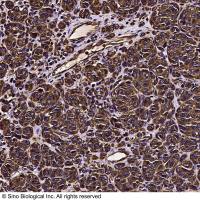Evaluation of Viral Interference with MHC Class I-Restricted Antigen Processing and Presentation Using a Flow Cytometry-Based Approach
互联网
互联网
相关产品推荐

Vimentin Antibody, Rabbit PAb, Antigen Affinity Purified | Vimentin 兔多抗 (抗原亲和纯化)
¥1699

APC Anti-Mouse MHC Class II (I-A/I-E) (M5/114.15.2) APC-65122
¥900

Recombinant-Acanthamoeba-polyphaga-mimivirus-Mitochondrial-carrier-like-protein-L276MIMIL276Mitochondrial carrier-like protein L276 Alternative name(s): VMC1 Viral mitochondrial carrier
¥10892

Flow Cytometry Antibody Dilution Buffer
¥500

SIRPA/SIRPA蛋白Recombinant Human Tyrosine-protein phosphatase non-receptor type substrate 1 (SIRPA)重组蛋白Brain Ig-like molecule with tyrosine-based activation motifs蛋白
¥1344
相关问答

